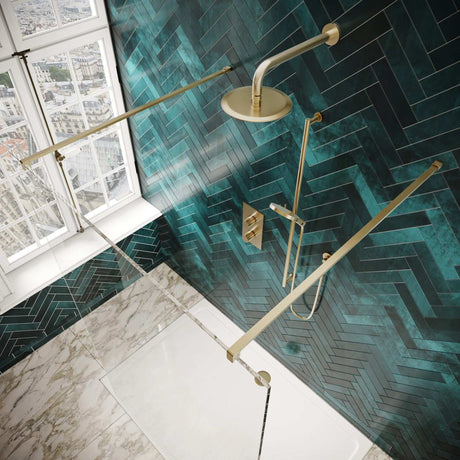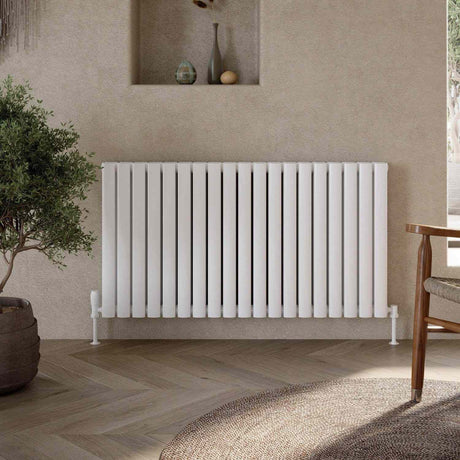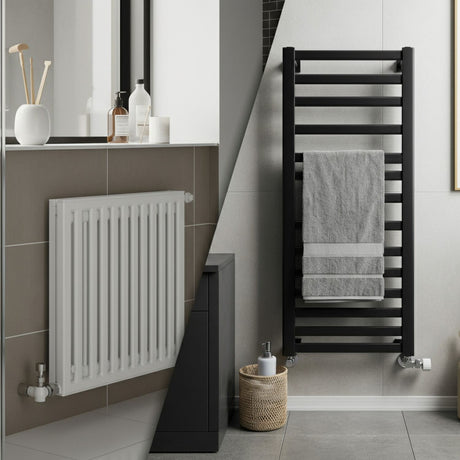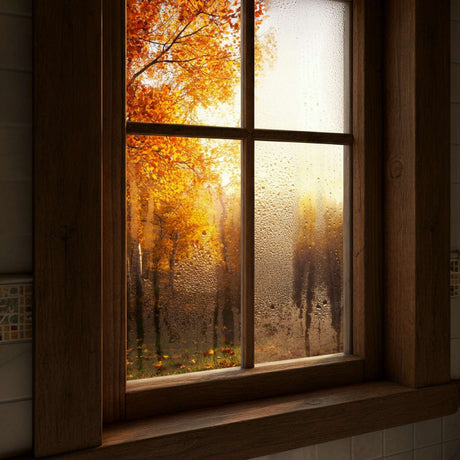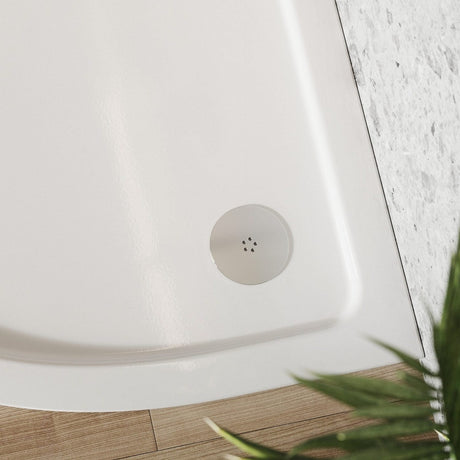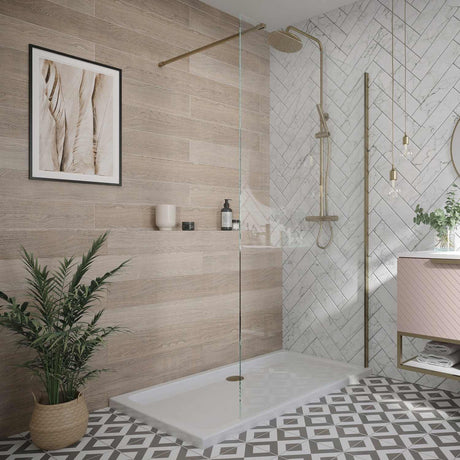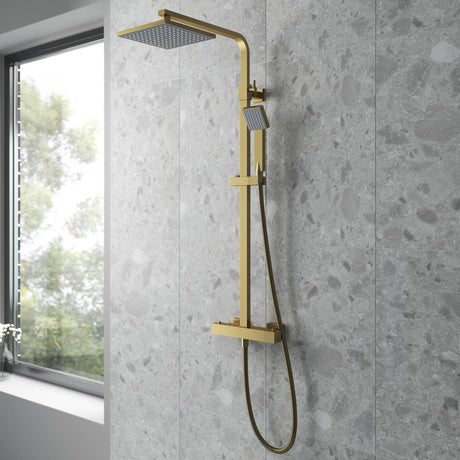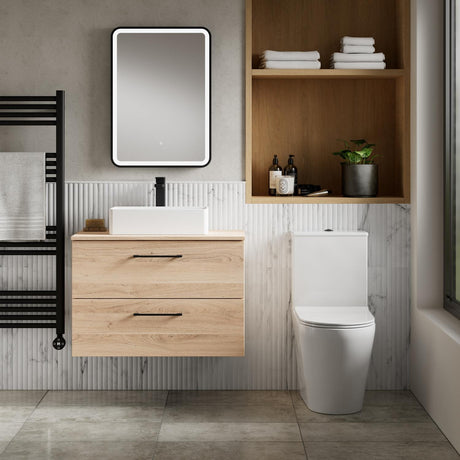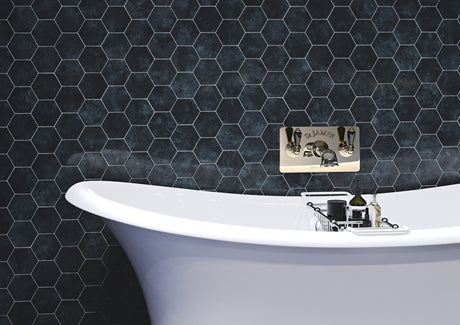Choosing the right bathroom heating can transform your daily routine, especially during Britain's colder months. Both radiators and heated towel rails serve the primary purpose of warming your bathroom, but each offers distinct advantages depending on your specific needs, space constraints, and design preferences.
Understanding the differences between these heating options will help you make an informed decision that balances performance, aesthetics, and budget considerations for your bathroom project.
What is a Radiator?
Radiators work by circulating hot water through internal channels, which then radiates heat throughout the room. This tried-and-tested heating method connects to your home's central heating system, providing consistent warmth distribution across larger bathroom spaces.
The heating process is straightforward: hot water enters the radiator from your boiler, flows through the internal pipework, and transfers heat to the surrounding air through convection and radiation. For optimal performance, radiators require regular maintenance - our guide on how to bleed a radiator provides step-by-step instructions for keeping your system running efficiently.
Benefits of Radiators
Effective whole-room heating: Radiators excel at warming entire bathroom spaces, making them ideal for larger rooms where consistent temperature control is essential.
Prevents dampness: The steady heat output helps combat moisture buildup, reducing the risk of mould and mildew formation—a common concern in British bathrooms.
Suitable for larger spaces: Traditional radiators provide the heating capacity needed for family bathrooms, en-suites, and commercial installations.
Potential Drawbacks
Bulkier design: Standard radiators require significant wall space and can dominate smaller bathrooms, limiting furniture placement options.
Less design flexibility: Traditional radiator styles offer fewer aesthetic choices compared to modern heated towel rail designs.
What is a Heated Towel Rail?
Heated towel rails operate through either your central heating system or via an electric element. These versatile fixtures combine heating capability with practical towel storage, offering a space-efficient solution for modern bathrooms.
Electric heated towel rails contain an internal heating element that warms the fluid inside, while central heating models connect directly to your existing system. Both types provide localised warmth whilst keeping towels dry and ready for use.
For comprehensive information about the advantages, explore our guide on the five benefits of a heated towel rail.
Benefits of Heated Towel Rails
Space-saving design: Wall-mounted installation maximises floor space, particularly valuable in compact bathrooms and en-suites.
Stylish design options: Available in numerous finishes, sizes, and configurations to complement contemporary and traditional bathroom designs.
Eco-friendly operation: Electric models can be controlled independently, potentially offering greater energy efficiency compared to gas-powered systems.
Dual purpose: Combines heating with practical towel storage, eliminating the need for separate towel hooks or rails.
Potential Drawbacks
Limited whole-room heating: Heated towel rails provide localised warmth rather than comprehensive room heating, which may require additional heat sources in larger spaces.
BTU considerations: Lower heat output compared to traditional radiators means careful sizing calculations are essential for adequate warmth.
Radiators vs Heated Towel Rails: A Detailed Comparison
Heating Efficiency
Radiators: Excel at whole-room heating, providing consistent temperatures throughout larger bathroom spaces. Their high BTU output makes them suitable for primary heating requirements.
Heated Towel Rails: Offer targeted, localised heating around the immediate area. Best suited for smaller bathrooms or as supplementary heating alongside other sources.
For comprehensive winter warming strategies, consult our guide on how to warm your bathroom in winter.
Design and Aesthetics
Radiators: Traditional designs with limited style variations, though designer radiators now offer improved aesthetic options.
Heated Towel Rails: Extensive variety in shapes, sizes, finishes, and configurations. Available in contemporary and traditional styles to match any bathroom design scheme.
Space Requirements
Radiators: Require dedicated wall space and floor clearance, potentially limiting bathroom layout options in smaller rooms.
Heated Towel Rails: Wall-mounted designs minimise space requirements whilst maximising storage capacity for towels and accessories.
Cost and Installation
Radiators: Generally lower initial purchase cost, with straightforward connection to existing central heating systems. Professional installation recommended for optimal performance.
Heated Towel Rails: Electric models offer installation flexibility but may have higher running costs. Central heating models require professional plumbing connections.
Environmental Impact
Electric heated towel rails: Can be more environmentally friendly when powered by renewable energy sources and used with programmable controls for targeted heating periods.
Traditional radiators: Efficiency depends on boiler type and overall central heating system performance.
Making the Right Choice
Key Considerations
Bathroom size: Larger bathrooms typically benefit from radiator heating capacity, whilst smaller spaces work well with heated towel rails.
Heating requirements: Primary heating needs favour radiators, whilst supplementary or targeted heating suits heated towel rails.
Design preferences: Contemporary bathroom designs often incorporate heated towel rails, whilst traditional styles may favour radiators.
Budget constraints: Consider both initial costs and long-term running expenses when making your selection.
Installation requirements: Electric models offer greater installation flexibility, whilst central heating connections require professional plumbing work.
Choose the Right Heating Solution for Your Bathroom
Both radiators and heated towel rails offer distinct advantages for bathroom heating applications. Radiators provide superior whole-room heating for larger spaces, whilst heated towel rails combine style with space-efficient operation for modern bathroom designs.
Your decision should reflect your specific requirements: bathroom size, heating needs, design preferences, and budget considerations. Many homeowners find that combining both options - using a heated towel rail alongside radiator heating - provides optimal comfort and practical benefits.
Consider your daily routines, bathroom usage patterns, and long-term satisfaction when selecting between these heating options. The right choice will provide years of reliable performance and comfort for your bathroom space. Discover our complete heating collection today at Asturias Bathrooms.






